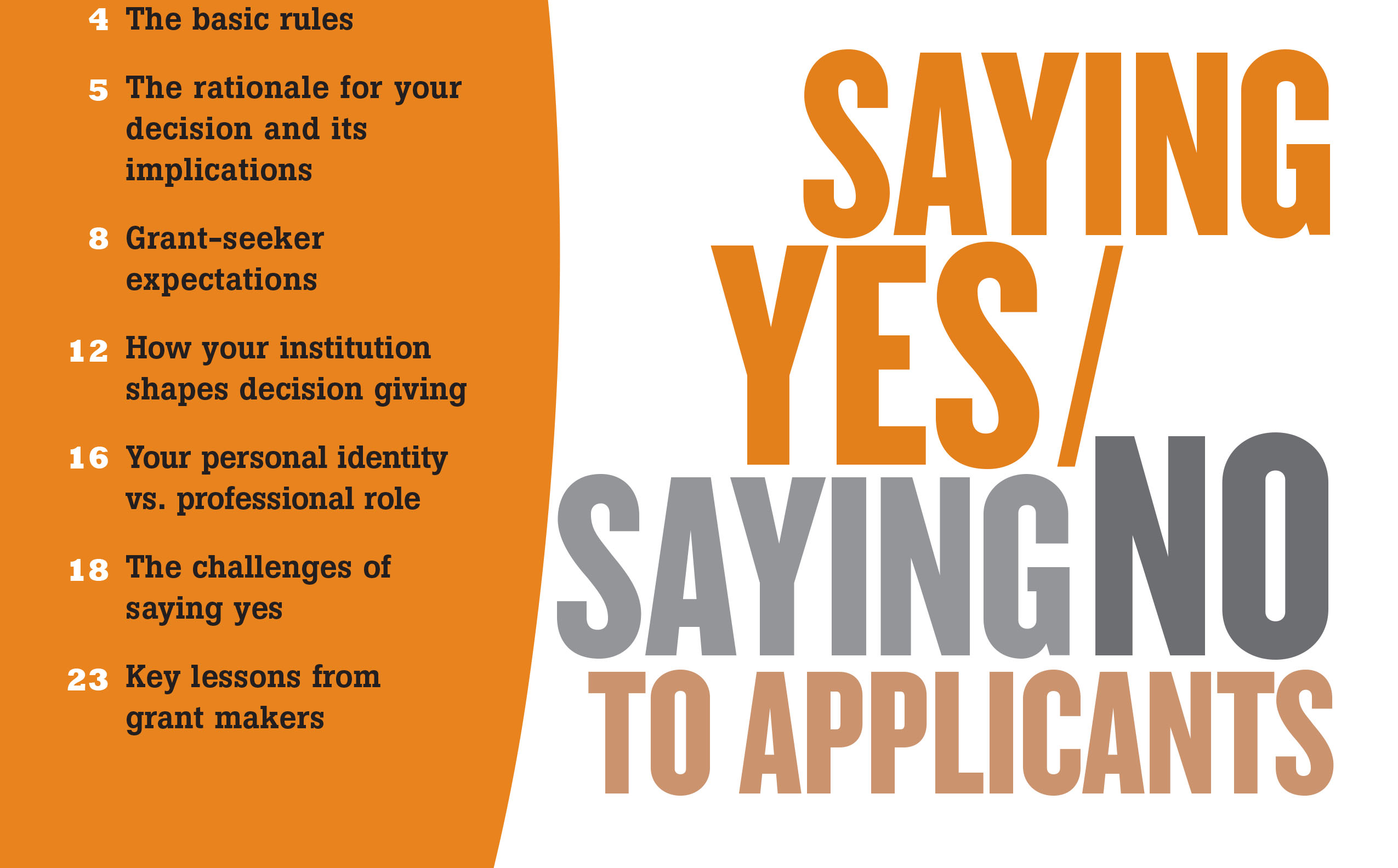Face-to-Face Decision Giving Why one foundation decided to notify applicants in-person
Several years ago, a then-new foundation completing its first round of grants found itself confronting what some staff and trustees considered a moral responsibility. “One of the things we learned in that first round,” recalls the foundation president, “was how much time people put into the application process.” Especially because the foundation had not yet developed clear guidelines, she continued, “we had lots of questions trying to sort things out.”
When the board finally reached its decisions, the board chair suggested that staff “go back and visit with everyone” to discuss the outcome. Given the time both parties had invested in this initial proposal process, “we felt we had a moral obligation” to share their thinking with the grantseekers personally.
Since then, all applicants seeking grants over $20,000 are notified of the board’s decision in person. “We explain early on,” the executive said, “that we are deeply engaged with our grantees and will invest time with them — as students to learn about our grantees, and as partners working together. We also explain that we do this out of respect for the time and attention they’ve given the process. We say that we’ll come to them for the site visit, and will ask them to come to us for the notification meeting.”
The sessions are scheduled in advance to fall within one week from the date of the board meeting, sometimes on the very next day. They are scheduled at 30-minute intervals, in part to preclude the tendency of some grantseekers “to want to re-plead the application.”
When the board has approved a grant, the notification meeting “is a way to work on developing our relationship. It’s a partnership discussion.” Foundation staff explain any conditions the board may have set, clarify expectations, and get updated on the organization’s work and plans. They also begin planning for an evaluation that the foundation helps grantees conduct.
Face-to-face declines have their own dynamics, which vary depending on the board’s reasoning. In some, “the conversation does turn toward the future. We like the organization, but the proposal just didn’t fit in the end.” Foundation staff might refer the organization to other potential funders or discuss types of proposals that might be a better fit. In a few cases, the foundation offers a planning grant to refine an appealing idea that has not been adequately researched or developed.
Speaking of cases where the prospects for future grants are slim, the CEO says, “If it’s clearly not our work to do, we are honest, saying there just doesn’t seem to be a match between the way we work and the way you work. We actively hold our grantees accountable, and are very present with them. If we don’t believe they can fulfill their goals, we tell them that.”
“People come in expecting a Yes,” she says. “We’ve learned you have to be very clear. We had a couple of people who didn’t understand that we had said No.” Many grantees — even when declined — respond positively to the meetings. “Some have told us they usually get a letter [from other funders] with no information. Or it says ‘call if you have any questions,’ and then their calls are not returned. Others have said it was actually helpful to hear the No, and the reasons, to hear how their organization is perceived.”

